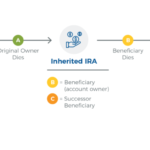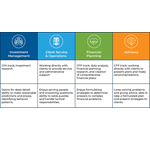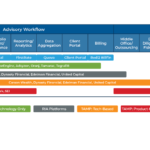In December of 2019, Congress passed the Setting Every Community Up For Retirement Enhancement (SECURE) Act, introducing substantial updates to the laws governing retirement accounts. Changes to post-death distribution rules resulted in the death of the ‘stretch’ provision for certain (most) non-spouse Designated Beneficiaries of inherited retirement accounts and introduced a new “10-Year Rule” for account distributions, which have important implications, not just for the Designated Beneficiaries of those retirement accounts, but also for their Successor Beneficiaries as well.
Prior to the passage of the SECURE Act, Designated Beneficiaries of retirement accounts were allowed to ‘stretch’ Required Minimum Distributions (RMDs) from the account over their own life expectancies. However, the SECURE Act eliminated the stretch option for most non-spouse Designated Beneficiaries, and instead, requires the account to be emptied by the end of the 10th year following the year of the original owner’s death. The SECURE Act, however, also created a new category of beneficiaries – Eligible Designated Beneficiaries – that is still permitted to use the ‘stretch’ provision.
Any of these beneficiaries, of course, could, themselves, die prior to emptying their inherited retirement accounts, leaving the balance to a Successor Beneficiary. Accordingly, there are now three potential scenarios for Successor Beneficiaries of inherited retirement accounts: 1) Successor Beneficiaries of post-SECURE-Act-Eligible Designated Beneficiaries, 2) Successor Beneficiaries of pre-SECURE Act Designated Beneficiaries, and 3) Successor Beneficiaries of post-SECURE Act Non-Eligible Designated Beneficiaries.
In scenarios 1) and 2), Successor Beneficiaries will generally be subject to the full 10-Year Rule. One exception to this is if the post-SECURE Act Eligible Designated Beneficiary (or pre-SECURE Act Designated Beneficiary) is the surviving spouse of the original account owner and dies before the decedent would have been required to begin taking RMDs. In such cases, upon death, they are no longer be considered a “Designated Beneficiary” of the account, but instead, are treated as if they had been the original account owner. Thus, the Successor Beneficiary wouldn’t be treated as a Successor Beneficiary and would not be automatically subject to the 10-Year Rule (i.e., if they were able to qualify as an Eligible Designated Beneficiary, they could qualify to take advantage of the ‘stretch’ provision).
For scenario 3, Successor Beneficiaries who inherit from post-SECURE Act Non-Eligible Designated Beneficiaries are, like other Successor Beneficiaries, subject to the 10-Year Rule; however, unlike other Success Beneficiaries, they will not have their ‘own’ 10-Year timeframe. Instead, their distribution period is a continuation of the 10-Year period that started when the Successor Beneficiary inherited the account.
Although the SECURE Act may negatively impact some Successor Beneficiaries by limiting the time they are allowed to prolong their Required Minimum Distributions, some Successor Beneficiaries may actually be able to benefit from the Act’s changes. In some instances, the number of years a Successor Beneficiary may have to empty their inherited retirement account may be extended, while in other instances, they may simply have a similar amount of time, but more flexibility than was previously allowed prior to the passage of the SECURE Act.
For example, for a Designated Beneficiary who ‘stretched’ RMDs and lives for a long time yet still dies with a substantial account balance, their Successor Beneficiary may have been left with only a few short years to distribute the remaining assets had it been under pre-SECURE Act rules (as they would have been required to use the original beneficiary’s remaining Single Life Expectancy). However, the 10-Year Rule of the SECURE Act now allows these Successor Beneficiaries up to 10 full years to distribute their accounts.
Ultimately, the key point is that while most of the attention on the SECURE Act’s impact on retirement account rules has focused on Primary Beneficiaries, the reality is that Successor Beneficiaries are impacted by the SECURE Act changes as well. While Successor Beneficiaries who inherit accounts from beneficiaries taking RMDs using the ‘stretch’ provision will get the 10-Year Rule (from scratch), some Successor Beneficiaries (i.e., post-SECURE Act beneficiaries of Non-Eligible Designated Beneficiaries) will ‘only’ be able to step into the initial beneficiary’s shoes, and will have to empty the balance of the IRA by the end of the 10-year period established by the original 10-year rule (i.e., the Non-Eligible Designated Beneficiary’s 10-year window). For both the original account beneficiary and their own named Successor Beneficiaries, the SECURE Act has created changes and potential opportunities that impact them both.





 Welcome back to the 187th episode of Financial Advisor Success Podcast!
Welcome back to the 187th episode of Financial Advisor Success Podcast!




